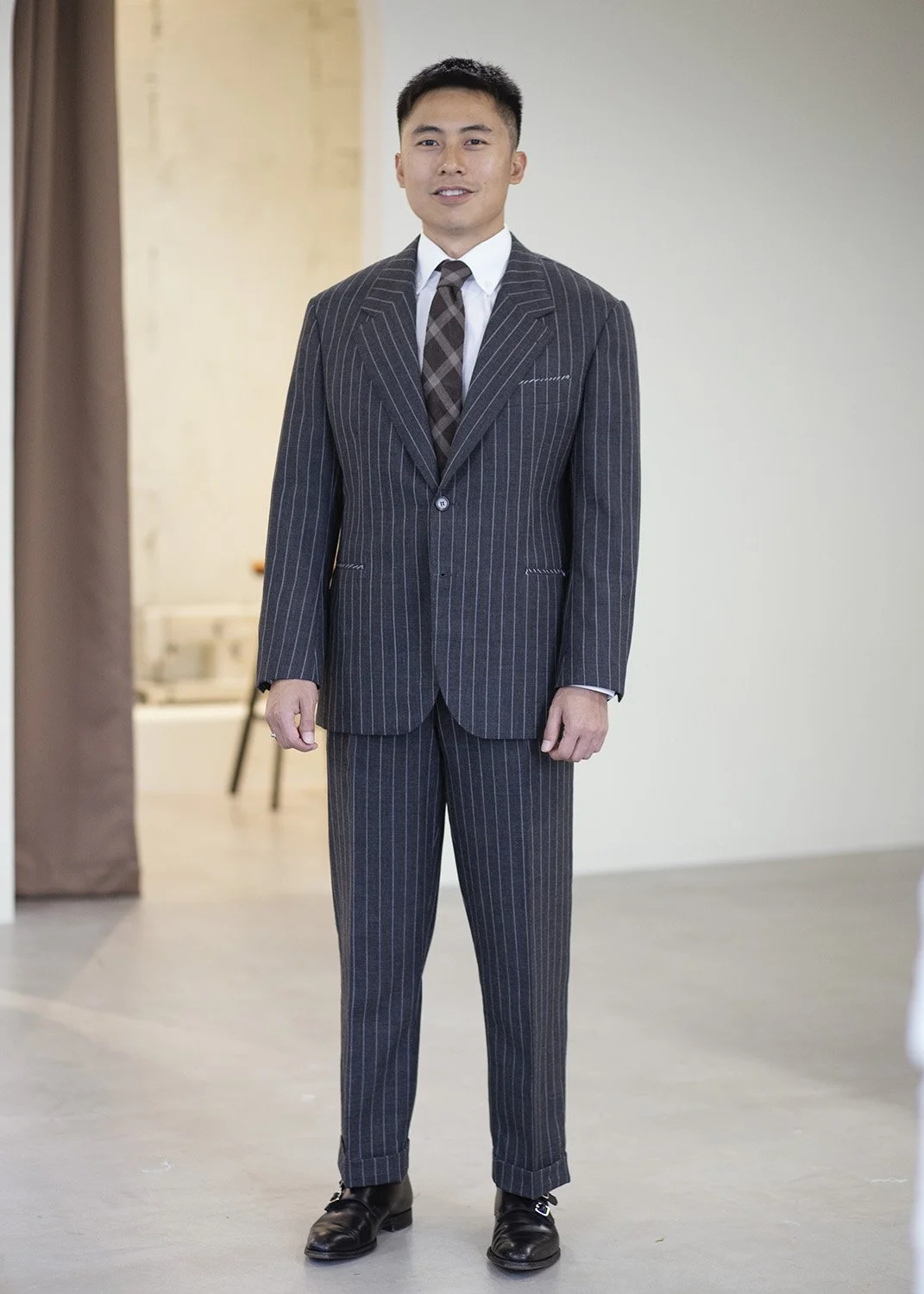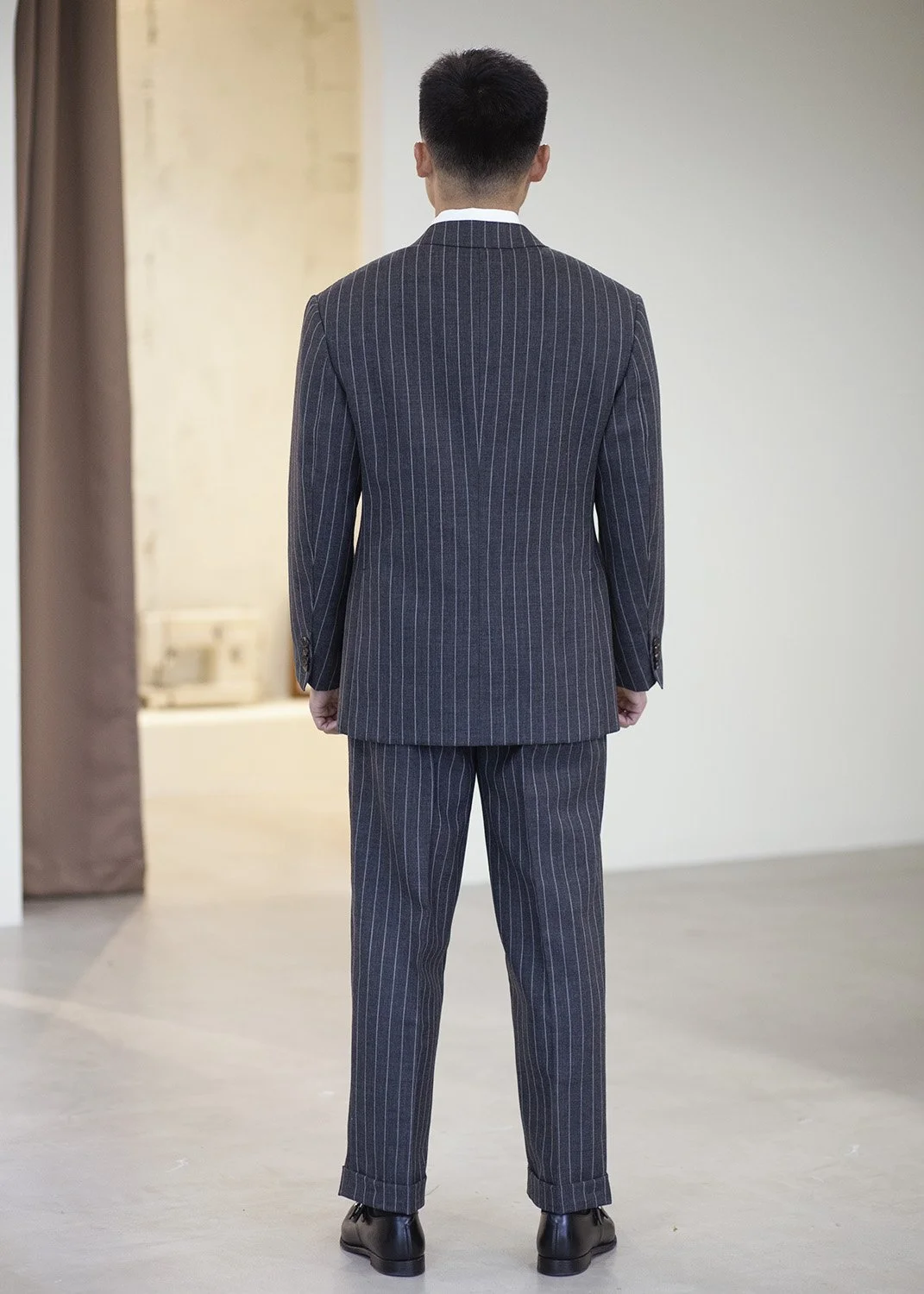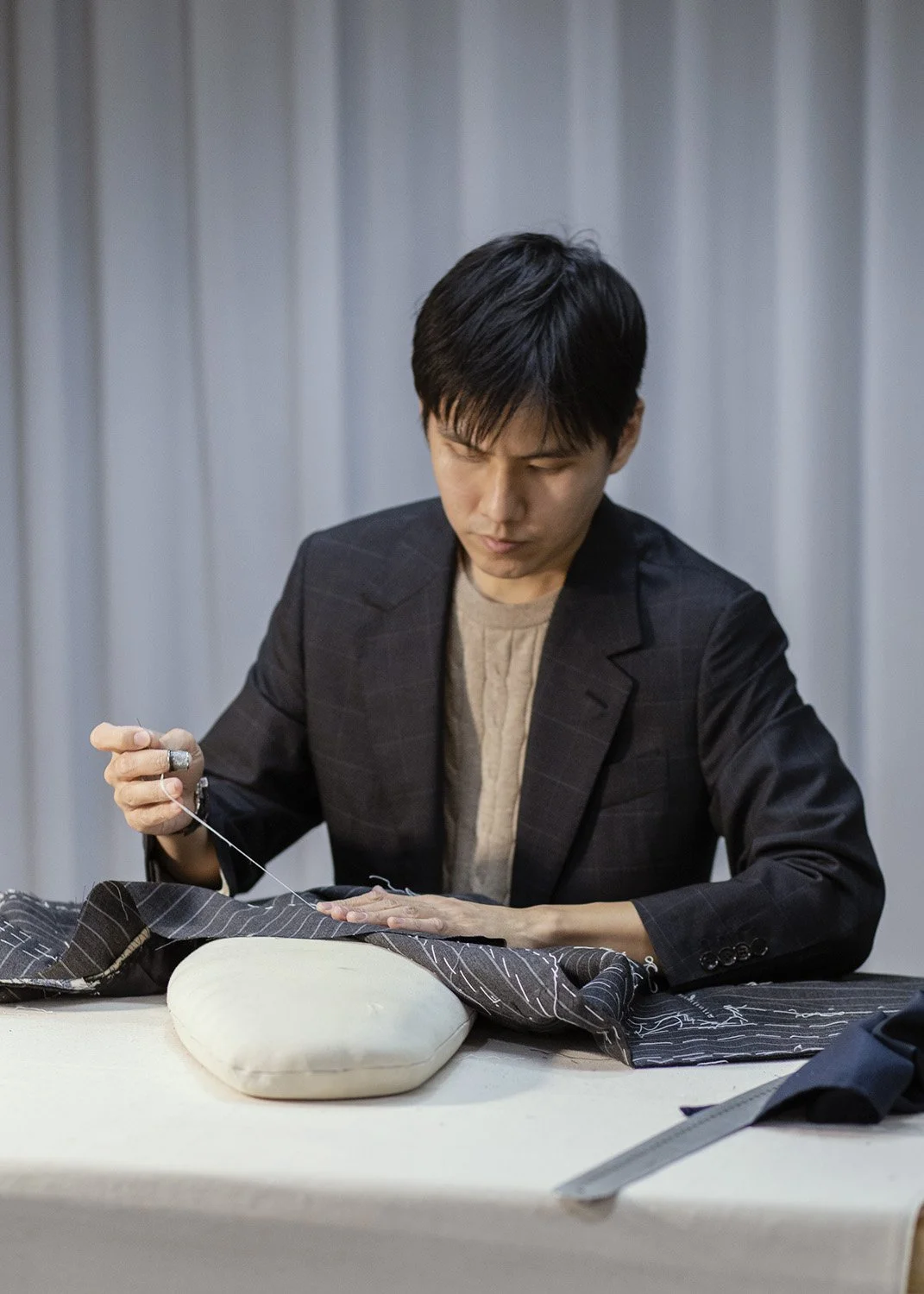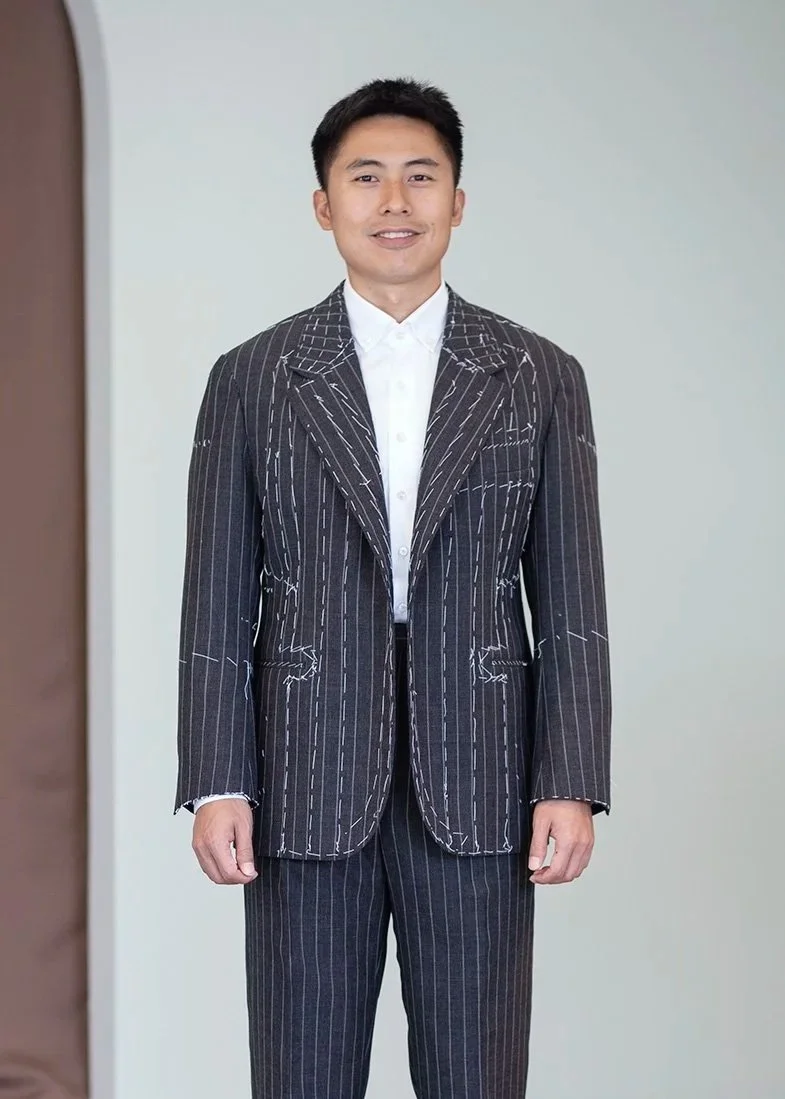Bespoke Tailoring - A Process of Art, Science and Man.
TCR1982 Charcoal Grey striped suit, in 310g.
In photograph: Wearing TCR1982 charcoal grey striped suit, bespoke by Alexander K.
What makes an authentic bespoke tailoring process? This question floats in my mind each time I embark on a new bespoke project. Over the years through trial and error, countless experiments, and moments of deep reflection (some of which involved talking to myself more than I’d like to admit), I’ve arrived at a conclusion: perfection is momentary, and oftentimes subjective.
And so, I’ve stopped chasing the fantasy of achieving ‘perfection’. Instead, I made it a point to keep myself on the trails of chasing perfection in hopes of creating the ideal result.
Defining the Ideal tailoring experience
But what does ideal truly mean in the world of bespoke tailoring?
To answer that, I first needed to understand the elements that shape this concept from both the tailor’s and the client’s perspectives. The tailor strives to craft a garment that is not only precise in its execution but also beautiful in form, while the client seeks a creation that brings him genuine satisfaction. Through my years in tailoring and the luxury retail industry, I’ve come to recognize the finest qualities that define excellence on both sides. Combining these insights has led me to form a personal philosophy I now call:
“The Art, Science, and Man of Tailoring.”
What I’m about to share is drawn from years of experience: from my early days as a tailoring salesman, to a novice cutter, an apprentice coat maker, and eventually, a master tailor.
But before we even begin to discuss fabrics or styles, the journey always starts in one place: alignment.
Aligning Expectations
Before any measurement is taken or fabric selected, it is essential to first align expectations between craftsman and client.
Most tailoring houses with in-house cutters and tailors possess a house style; a distinctive signature that reflects their identity and philosophy.
As craftsmen, we carry the responsibility of understanding our client’s aesthetic preferences, lifestyle, intentions, and the ecosystem of their existing wardrobe. This understanding allows us to determine whether there is harmony between the brand’s direction and the client’s expectations.
Why are they commissioning a tailored garment? What does their week look like? What do they already own? i.e. shoes, shirts, or trousers?
These early conversations form the foundation for everything that follows. The better we listen, the more seamless and meaningful the process becomes.
Recommending the right fabrics and styles for each client makes all the difference, far more than simply selling for the sake of margin. There is a world of difference between completing a transaction and cultivating a lifelong friendship based on trust and integrity.
Fabric selection, and style discussion.
Cutting out a prototype for the purpose of fitting.
The Art
Art begins with observation and culminates in a shared vision of the desired outcome.
Our assessment of a client’s physical and anatomical traits often happens instinctively. With experience, the eye learns to notice subtleties which includes posture, presence, physique, even personality.
Through ongoing conversation, we begin to form a mental image of what the client truly needs, and how we can bring something of lasting value into his wardrobe and daily life.
The selection of fabric and the shaping of style is, in itself, an artistic process. Helping a client visualise a look, imagine a silhouette, and construct a palette that leaves a lasting impression. That too, is art.
What’s even more beautiful is that the dialogue and interaction itself becomes an art form: knowing when to speak, when to listen, and how to build an honest connection, arriving at a mutual conclusion that further adds positive value to the tailoring process.
To me, creating a masterpiece does not always demand extravagance. More often, it lies in the quiet pursuit of beauty through simplicity and respect for a process carried out with care, meaning, and intention.
Bespoke suit with a clean backview.
Work in progress. Setting the top-collar.
The Science
The Science
Once we have a clear artistic direction on the style, fabric, and lifestyle needs. We move on to the second pillar: Science.
If Art is about imagining the ideal, then Science is about bringing that vision to life.
This involves:
• Translating measurements into patterns
• Constructing a prototype
• Fitting, refining, and perfecting
Here is where philosophy meets practicality. The cutting table becomes a laboratory, and every line carries meaning.
As a seasoned cutter, I firmly believe that the person who cuts the suit should also be the one who measures the client. There is something irreplaceable about that firsthand connection in the sense that it eliminates guesswork and preserves intention. Some may debate this, but I stand by it. At the end of the day, tailoring is about minimizing assumptions and maximizing precision.
Fittings are not mere checkpoints; they are vital feedback loops. Each one offers a rare opportunity to correct, refine, and elevate the experience, ensuring that the final creation is nothing short of exceptional.
Observing how a client walks, shakes hands, or folds his arms reveals subtleties that no mannequin could ever convey. After all, any jacket can look impeccable on a stand. But we do not tailor for mannequins. We tailor for discerning men, for real bodies in motion, for lives that demand both elegance and presence.
Part of the tailoring process. Fitting before completion.
Part of the tailoring process. Fitting before completion. (Back View)
The Man
With Art and Science in harmony, we arrive at the final and most essential element: The Man.
No matter how meticulously a suit is designed or constructed, it must ultimately belong to the wearer.
An ideal suit is not merely one that fits; it is one that allows a man to feel at ease, elevated, and wholly himself. It should enhance his presence while preserving comfort and freedom of movement. If he fidgets or feels uncomfortably constrained, the suit has failed; no matter how visually flawless it may appear.
Confidence in a bespoke garment should be effortless, not performative. A man who is truly at ease in his suit does not need to assert his presence; he simply exists, fully composed.
Ultimately, it is never about the suit wearing the man. Rather, it is about the man commanding the suit.
In Closing
This is my personal reflection on what it means to create the ideal tailoring experience; a continuous, evolving journey of learning and understanding, guided by Art, grounded in Science, and always centred on the Man. For the tailor, the end of every project should be an opportunity for further enlightenment, and gateway for higher standards in the next commission.
Each suit tells a story, a conversation that speaks of the quiet collaboration between hands and mind, craft and client. To those who walk this path with me, I am deeply grateful for the opportunity in shaping their garments, just as they shape the tailor I am becoming.








